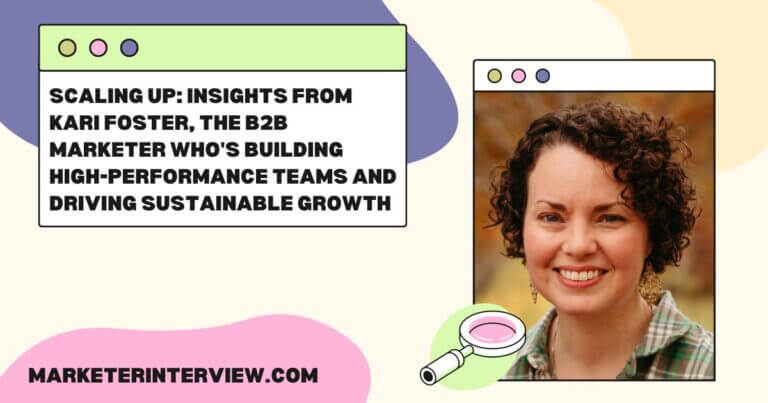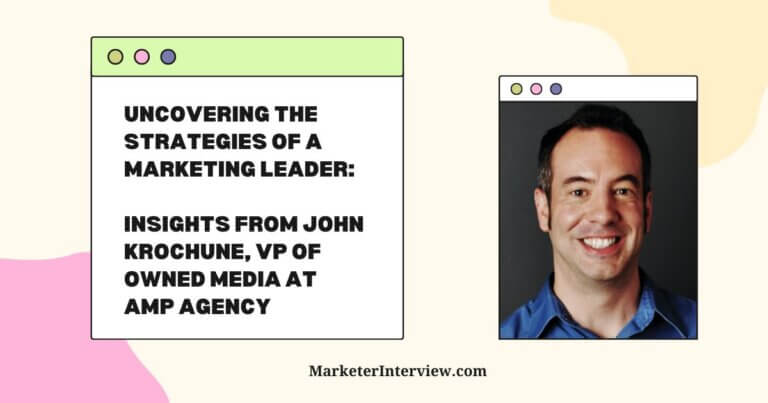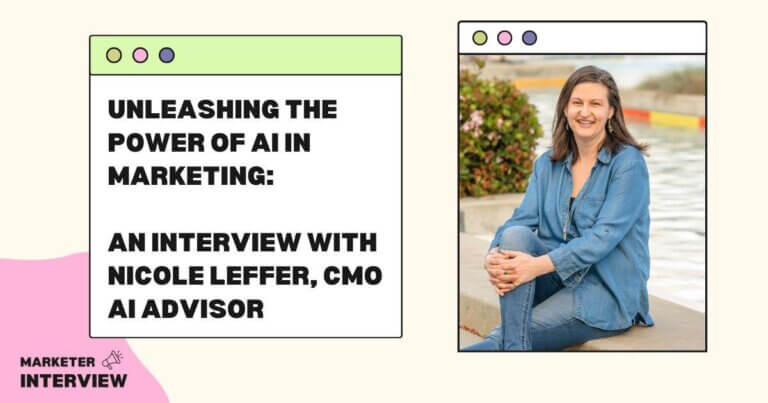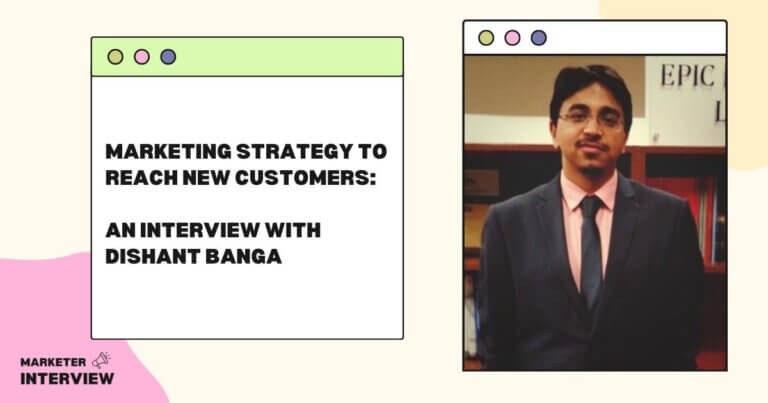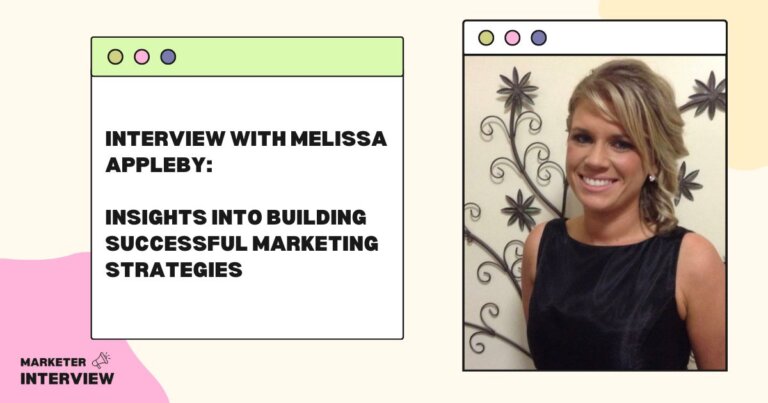A Conversation with Garima Mamgain, Integrated Marketing Manager at 3M
Welcome to Marketer Interview, where we chat with the most exciting marketers in the industry!
Today, we are excited to have Garima Mamgain, the Integrated Marketing Manager at 3M, a data-driven creative marketer with 13+ years of specialist experience in tech firms, B2B portfolios, and demand generation initiatives.
Garima is also a passionate writer and publishes a weekly marketing newsletter called Marketing Dojo.
Contents
- 1 What inspired you to pursue a career in marketing?
- 2 How has your marketing career evolved over the years?
- 3 Can you tell us about a particular marketing project you worked on that you’re incredibly proud of?
- 4 What’s your approach to employee advocacy, and how do you encourage your team to participate and amplify your brand’s message?
- 5 How do you integrate influencer marketing into your B2B marketing strategy?
- 6 Can you share some tips on creating a successful content strategy for B2B audiences?
- 7 How do you leverage social media to generate leads and engage your target audience?
- 8 What tools and software do you use for your marketing job?
- 9 As a marketing leader, how do you foster innovation and inclusivity in your team?
- 10 What advice would you give to someone just starting in their marketing career?
What inspired you to pursue a career in marketing?
I began my career as a coder right after completing my engineering degree. While I enjoyed coding, what truly excited me was interacting with clients and understanding how my work was improving their lives. I developed the electronic fund transfer mechanism for India’s largest retail bank during this time.
Following this, I pursued an MBA program, which was a transformative experience. The program enabled me to explore my innate interests, and I discovered an unrelenting passion for customer insights, marketing analytics, and marketing concepts in general. Consequently, I prioritized marketing courses in my second year to strengthen my understanding of the field.
How has your marketing career evolved over the years?
My career path is anything but linear.
I began my career as a management trainee at Nokia, where I honed my skills as a sales manager. Although challenging, the experience enabled me to develop empathy and an understanding of my circle of control.
Subsequently, I briefly served as a marketing professional at HSBC before transitioning to a campaign management role at Audi, a member of the Volkswagen Group.
Working in the automotive sector provided me with valuable insights, as my team was responsible for executing several marketing campaigns for brand awareness, demand generation, and new product launches.
I then developed an integrated marketing strategy for Porsche in India.
B2B marketing offers unparalleled full-funnel visibility, which drew me to this field.
As a B2B marketer, I have the opportunity to influence and shape the entire customer buying cycle, and the impact I can make on a business is both measurable and crucial. Therefore, delivering meaningful results is of utmost importance to me, and the current landscape of B2B marketing is full of exciting opportunities to do just that.
At 3M, I manage various segments of B2B customers across 13 countries and oversee initiatives such as account-based marketing, SEO optimizations, website UI/UX improvements, email marketing, employee advocacy, and demand generation campaigns. It is a constantly enriching experience as a marketer.
Can you tell us about a particular marketing project you worked on that you’re incredibly proud of?
I had the privilege of joining Porsche during its early days in India when we were a small team of six setting up the Porsche business in the country.
It felt like a startup within the larger VW group, which presented unique challenges for my marketing role. Despite Porsche’s established reputation in Europe and the US, it was relatively unknown in India.
Upon meeting potential customers, we quickly realized that our marketing efforts needed to appeal to two distinct audiences: buyers and fans. In addition, we recognized that developing and engaging a community of Porsche enthusiasts in India was crucial for sustainable demand.
To achieve this, I collaborated with leading lifestyle and auto publications to co-create compelling storylines. We also established social media accounts and regularly hosted live events, quizzes, and giveaways.
Our two-fold marketing approach focused on exclusive event leads to engage potential customers and a content-led approach to reach a broader fan base.
As a result, Porsche experienced significant sales growth throughout 2017, with double-digit increases month after month. In addition, our brand visibility increased dramatically, with Top Gear featuring a Porsche in eight of twelve issues that year.
It was an exciting and rewarding opportunity to challenge traditional automotive marketing methods while working with the strong brand power of Porsche. Looking back, we are proud of what we achieved with limited resources.
What’s your approach to employee advocacy, and how do you encourage your team to participate and amplify your brand’s message?
Employees are our in-house influencers. Through our employee advocacy program, we aim to support our colleagues in developing their personal and professional brands while promoting our innovative products.
As with any new initiative, our employee advocacy program faced initial challenges. However, we recognized that for the program to succeed, we needed to provide compelling content and encourage active participation from our employees.
To address this, I collaborated with our creative agency and marketing team to repurpose existing program content and tailor it to suit our needs better.
Additionally, we worked with our company leaders to lead by example, adopt the platform, and provide comprehensive training to all employees in the Asia region.
Establishing habits can be challenging. As a solution, I implemented a 3-month competition to collect valuable feedback and reviews while promoting healthy competition among platform users. Promoting employee advocacy remains a crucial aspect of our organic marketing strategy to engage with our consumers effectively.
How do you integrate influencer marketing into your B2B marketing strategy?
We work extensively with influencers for a highly competitive segment and often commoditized segment.
While we remain a B2B business, our influencer activities are more B2C, i.e., we aim to drive end consumer awareness. Our ultimate objective is two-fold:
- Drive brand awareness in a category where consumers traditionally depend on channel partner recommendations for brands
- Active demand generation for channel partners that work with us
We typically work with micro-influencers across the region. For measurable results, we rarely depend on organic reach.
Combining performance & influencer marketing helps us target our audiences better and drive measurable results such as web traffic and high-value actions like visiting our partner locator tools.
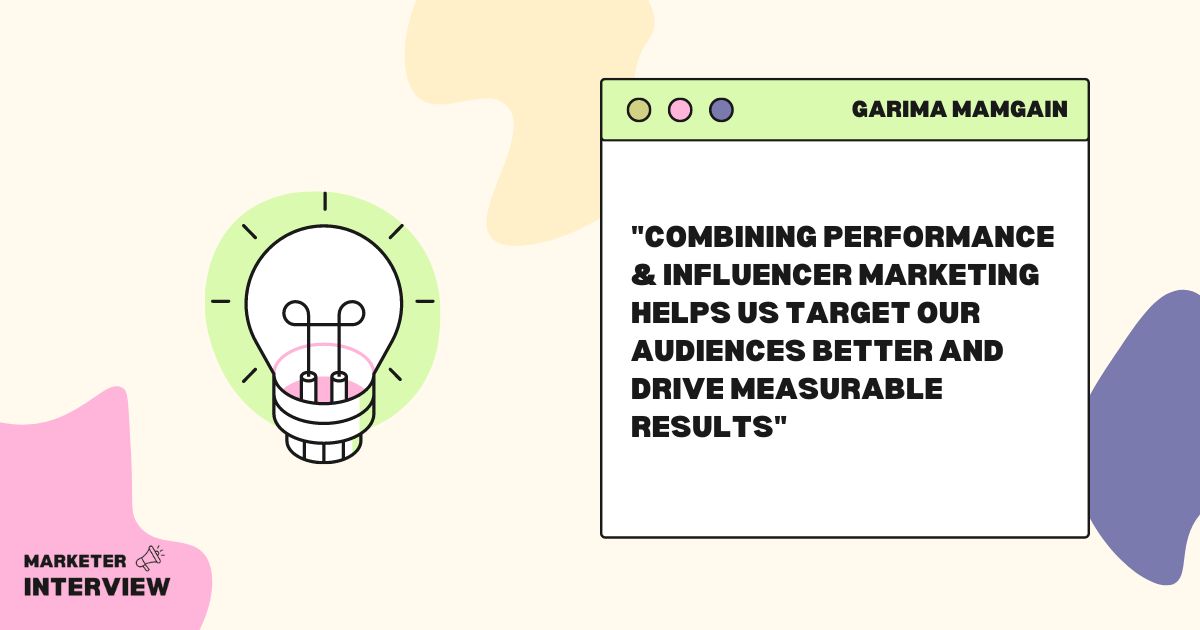
Content marketing is a fairly broad field. With our limited resources, we prioritize a few key actions:
- Websites: We depend on SEMRush to check for search trends, customer questions & intent, and more. We regularly create new blog posts and update existing ones to integrate with our customer’s online buying journey. Our website is our central hub for all the other content.
- Youtube: A nascent but high-interest area for us. We are looking at repurposing our existing content but making it more searchable by improving descriptions, upgrading thumbnails, etc.
- Social media: As a regional leader, I help generate a content bank that our country teams can utilize.
- eDMs: Email marketing is one of our high-engagement & cost-effective channels. Depending on our customer’s profile, frequency of buying, and sales cycle – we vary the emailing schedule & content.
- Webinars: While in-person events have restarted and are back in vogue. Webinars with educational content help us engage highly knowledgeable audiences in our niche segments.
These might seem like many channels for a lean B2B team, but repurposing, reusing, and remixing are our best friends. As far as possible, I use global assets or pre-existing material but contextualize it to the country, customers, and medium.
The framework of nibble-bite-snack-meal helps us break down one piece of content to create more customer engagement opportunities.
Often, measuring the ROI of each type of content on a standalone basis is challenging and counterproductive. Adobe Analytics helps us measure web traffic from identified sources.
We also measure web traffic coming through direct & branded keyword sources.
Changes in click-through ratio and conversion rates also are indicators of the compelling nature of our content.
This is a damper. Social media’s organic reach has been going down year after year. Even when we feel like we have hit the floor, it gets worse from there.
We maintain our presence on Meta platforms and rely on a global corporate page for LinkedIn. The social media presence helps us with the following:
- Identifying the posts that resonate with our audiences that can be used as ads or other content promotions
- Respond to customer queries
We see social media as a top-of-the-funnel activation channel. Due to the platforms’ zero-click nature, we track our accounts’ on-platform performance, such as reach and engagement rates.
A pro tip: As our brand allows, use the latest format the social media channel introduces. Repurposing our content bank for FB reels helped us improve our engagement rates in the recent past.
What tools and software do you use for your marketing job?
I use tons of tools to help me manage my role effectively. Some of them are:
- Claravine for creating UTM tags: UTM tags are essential for tracking the performance of your marketing campaigns
- Adobe Analytics to check the behavior of the incoming traffic – Adobe Analytics provides valuable insights into how visitors interact with our websites.
- Eloqua & Salesforce to manage the funnel and marketable contacts.
- Sprinklr for social media management – Sprinklr makes it easy to manage multiple social media accounts from one platform.
- PowerBi for real-time reporting & dashboards
- SEMrush to understand search behavior and unearth content opportunities.
- Dynamic Signal’s platform for employee advocacy
- Statista for making data-backed decisions
- Personal tools: Canva & Notion
As a marketing leader, how do you foster innovation and inclusivity in your team?
Marketing organizations must prioritize diversity and value a variety of perspectives. Embracing diversity allows for a range of ideas to be brought to the table, leading to innovation and relevance for a broad audience.
At 3M, we encourage a culture of experimentation and learning from failures. Therefore, we prioritize transparency and acceptance when a campaign does not perform as expected.
We continue to experiment and learn from these experiences. For example, when a campaign exceeds our expectations, we invest more resources in the country or expand its geographic reach. As a science company, hypothesizing and experimentation are integral to our DNA.

What advice would you give to someone just starting in their marketing career?
There are so many ways to be a successful marketer, and hence, no one set of skills can get you there. So here are my seven recommendations for marketing enthusiasts.
- Develop empathy: Invest a deep understanding of your target audience
- Experiment: Learn from your successes and failures
- Stay curious: Remain up-to-date with industry trends. Marketing changes weekly.
- Creative problem solving: Look at other unrelated fields for ideas and solutions that can be adopted in yours.
- Stakeholder management: Develop collaboration & project management skills
- Learn to love data
- Network

